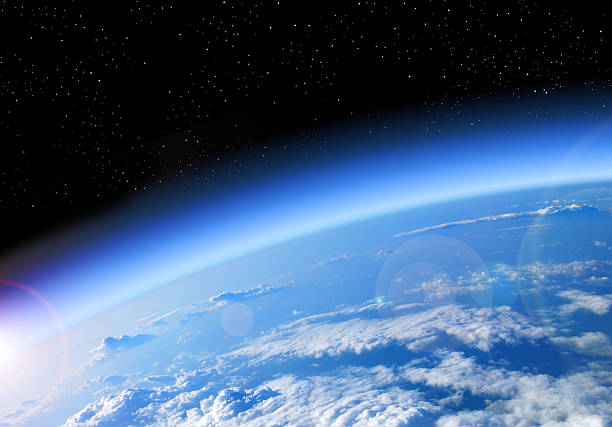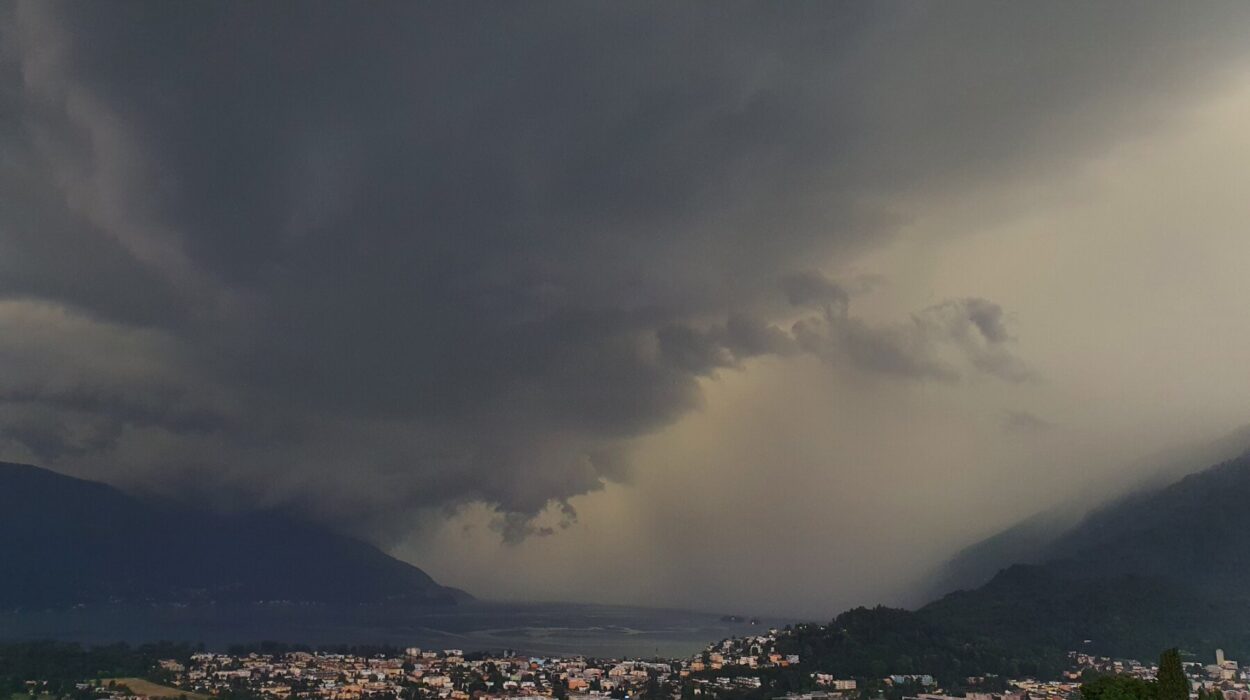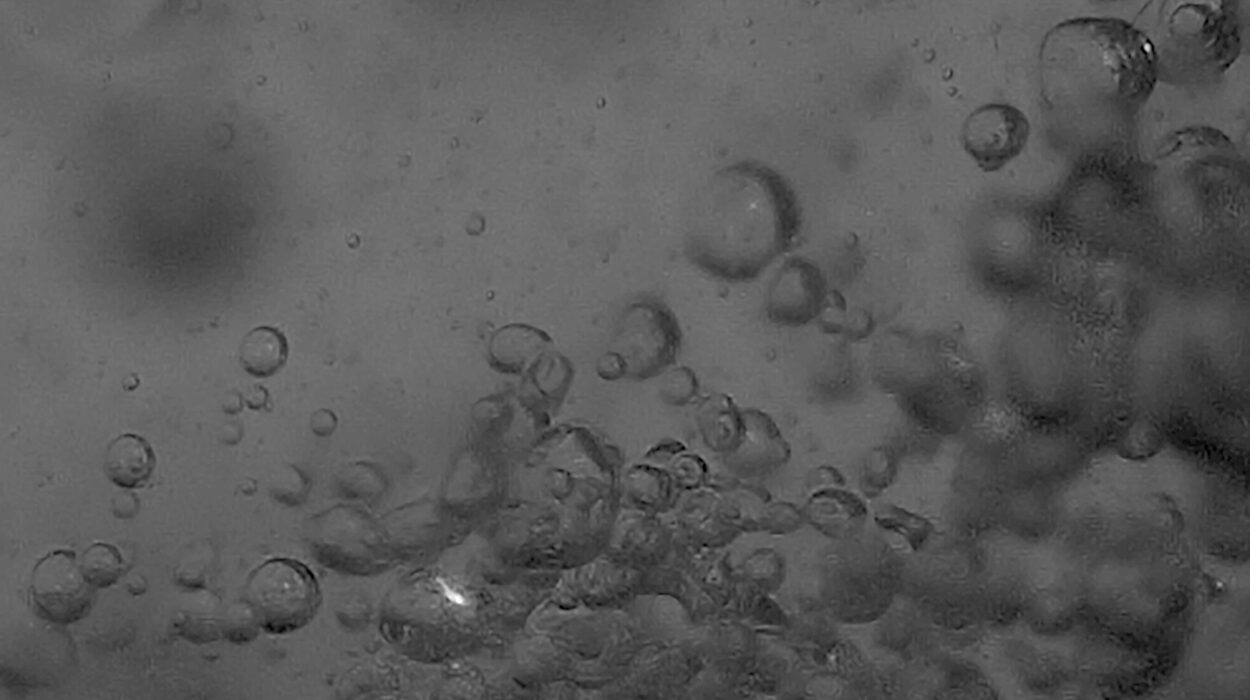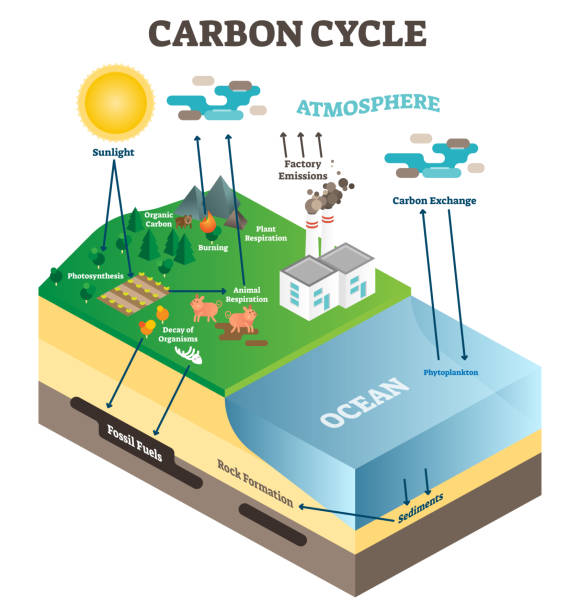Imagine standing on the young Earth, four and a half billion years ago. There is no birdsong, no rustling leaves, no breath of wind. The sky is not blue. There is no oxygen to inhale, no animals or plants, no clouds floating overhead. What stretches above is a veil of poisonous gases swirling in an alien sky, a smog of volcanic breath and cosmic debris. The air, if you could call it that, is thick with carbon dioxide, methane, ammonia, and water vapor, and utterly devoid of the invisible gas we now take for granted: oxygen.
This is the story of Earth’s atmosphere, a story not merely of gases and molecules, but of transformation, resilience, catastrophe, and rebirth. It is a saga that spans billions of years and reflects the deep interplay between geology, biology, and chemistry. To explore the history of the atmosphere is to travel back to the very heart of Earth’s identity—how this planet, unlike any other we know, grew lungs and learned to breathe.
The Fiery Birth: Earth’s First Atmosphere
Our story begins in fire. About 4.6 billion years ago, Earth was born from a swirling disk of dust and gas orbiting the young Sun. The early solar system was a violent place, full of colliding planetary embryos and relentless bombardments. Earth, still molten and unformed, was too hot to hold onto any gases. What little atmosphere it might have had—primarily hydrogen and helium, the lightest and most abundant elements in the universe—was quickly swept away by the Sun’s ferocious solar wind.
This was Earth’s first atmosphere: thin, fragile, and temporary. It was more a passing whisper than a stable sky.
But as the young planet cooled, something remarkable began to happen. Volcanoes burst through the crust, pouring out lava and belching gases into the air. These volcanic emissions—mostly carbon dioxide, nitrogen, sulfur dioxide, water vapor, and traces of methane and ammonia—began to form Earth’s second atmosphere. There was no oxygen yet, no ozone layer to block ultraviolet rays, and no life to stir the stillness.
And yet, this was the seed of transformation.
The Veil of Greenhouse Gases
The early atmosphere was a suffocating greenhouse. With high levels of carbon dioxide and methane, Earth should have been a boiling hell. But paradoxically, the Sun back then was only about 70% as bright as it is today. This “faint young Sun paradox” has puzzled scientists for decades: how could Earth stay warm enough to support liquid water if the Sun was so dim?
The answer lies in the composition of that dense early atmosphere. Greenhouse gases trapped heat, creating a planetary blanket that kept the surface from freezing solid. Without this thermal shield, Earth might have remained an icy desert, incapable of ever nurturing life.
Water vapor, another powerful greenhouse gas, began to condense as the planet cooled. Rains fell for centuries, possibly for thousands of years, filling the basins and sculpting oceans. This hydrosphere, born from the breath of volcanoes, was the first great transformation on Earth’s surface. And it would soon become the cradle of life.
The Breath of Life: Microbes Change the Air
Somewhere around 3.8 billion years ago, in the primordial oceans of the young Earth, life took its first uncertain steps. The earliest organisms were single-celled and simple—microbes clinging to hydrothermal vents or floating in shallow seas. These ancient ancestors were anaerobic, meaning they lived without oxygen. For them, oxygen was toxic.
Then came a revolution so profound that it changed the planet forever: photosynthesis.
Cyanobacteria—microscopic architects of change—evolved the ability to capture sunlight and use it to turn carbon dioxide and water into food. In doing so, they released a byproduct utterly foreign to the planet’s atmosphere: molecular oxygen. For millions of years, this oxygen bubbled quietly into the oceans, reacting with iron and other elements, forming rust-red bands in the seafloor sediments known as Banded Iron Formations. The oceans were painted in streaks of iron oxide, evidence of this invisible chemical war between life and the world it inhabited.
Eventually, the reactive sinks were saturated. Oxygen had nowhere else to go. It began to accumulate, rising from the sea into the air. And then, roughly 2.4 billion years ago, the sky changed forever.
The Great Oxidation Event: Earth Takes a Breath
The Great Oxidation Event (GOE) was one of the most dramatic atmospheric transformations in Earth’s history. Oxygen, once a rare trace gas, began to surge in concentration. To many of the organisms that had evolved in an oxygen-free world, it was nothing less than a catastrophe. Oxygen attacked their cellular machinery, poisoned their metabolic pathways, and drove countless species into extinction.
But for others, oxygen was a gift. It enabled the rise of aerobic respiration, a far more efficient way to extract energy from food. Life, now breathing with new lungs, could grow more complex, more diverse, more dynamic.
Geologically, the GOE left fingerprints across the planet. Rust-red rocks testify to the oxidation of iron. Sulfur isotopes show a sudden shift in atmospheric chemistry. And in the air, the balance began to shift. Carbon dioxide fell. Methane levels plummeted. The greenhouse gases that had once warmed Earth began to vanish—and the consequences were chilling.
Snowball Earth: The Price of Oxygen
With methane removed and carbon dioxide reduced, Earth’s atmosphere lost much of its warming power. Between 750 and 600 million years ago, our planet plunged into a series of deep ice ages, known as the Snowball Earth episodes. Glaciers spread across continents. Ice may have reached the equator. Oceans were sealed beneath miles of frozen crust.
It’s difficult to imagine a more extreme transformation. Yet even this icy hell would not last forever. Volcanoes continued to spew carbon dioxide into the air, and with time, the greenhouse effect returned. Earth thawed, seas melted, and life, resilient and adaptive, survived.
More than survived—it flourished.
The Rise of Oxygen and the Explosion of Life
As the Neoproterozoic era faded and the Cambrian dawned around 540 million years ago, the atmosphere reached a tipping point. Oxygen levels rose to a threshold that could support larger, more complex life forms. Multicellular organisms, which had evolved in the deep ocean, now expanded rapidly. This Cambrian Explosion saw a riot of new body plans, shells, skeletons, and sensory organs—most of them powered by aerobic metabolism.
For the first time, animals colonized the shallows and later the land. The atmosphere became not just a protective shell but a medium of respiration, an environment teeming with flying insects, roaring reptiles, and eventually, birds and mammals.
Over the next hundreds of millions of years, Earth’s oxygen levels would fluctuate wildly, rising and falling with tectonic shifts, evolutionary booms, and extinction events. During the Carboniferous period, oxygen soared to nearly 35%, creating a world where dragonflies the size of seagulls soared through swampy forests. But high oxygen also brought volatility—fire, for example, became far easier to spark and far harder to contain.
Atmospheric Catastrophes and Climate Shifts
Earth’s atmosphere is not a passive backdrop—it is an active participant in planetary drama. Across geologic time, it has played a leading role in mass extinctions. The Permian extinction, the worst in Earth’s history, saw over 90% of species vanish. Massive volcanic eruptions in what is now Siberia flooded the atmosphere with carbon dioxide and sulfur, warming the planet and poisoning the seas. The sky turned deadly.
Sixty-six million years ago, a different catastrophe—the impact of a massive asteroid—threw dust and aerosols into the atmosphere, blotting out sunlight and collapsing ecosystems. The dinosaurs, along with three-quarters of Earth’s species, perished.
But from these ashes, new life emerged. The atmosphere again became a crucible of change, sheltering mammals, nurturing forests, and eventually, shaping the conditions for the rise of one particularly curious primate: us.
The Anthropocene: A New Chapter in Atmospheric History
Fast forward to just a few centuries ago. Human civilization began to reshape the world in unprecedented ways. The Industrial Revolution ignited a surge in fossil fuel combustion, pumping carbon dioxide, methane, and other greenhouse gases into the atmosphere. In just a blink of geologic time, we have altered the air more rapidly than almost any event in Earth’s history.
We are now living in what many scientists call the Anthropocene—a proposed epoch defined by human impact on Earth’s systems, including its atmosphere. Carbon dioxide levels have soared to over 420 parts per million, a figure not seen in millions of years. The planet is warming. Glaciers are melting. Sea levels are rising. Weather patterns grow more extreme, and ecosystems strain under the pressure.
But unlike the microbes of ancient oceans or the dinosaurs of a vanished world, we know what’s happening. We can measure it. We can understand it. And perhaps most importantly—we can choose what comes next.
The Protective Blanket: Ozone and the Edge of Space
Among the many invisible gifts of Earth’s atmosphere is the ozone layer. Formed by the interaction of solar ultraviolet light with oxygen, ozone acts as a shield, protecting life from harmful UV radiation. Without it, DNA would fray, skin would burn, and the surface of the Earth would be far less hospitable.
In the late 20th century, scientists discovered that human-made chemicals—chlorofluorocarbons, or CFCs—were tearing holes in this delicate layer. The world responded. The 1987 Montreal Protocol, a landmark environmental treaty, led to a global phase-out of CFCs. The ozone layer began to recover—a rare and powerful example of collective action restoring balance to the atmosphere.
Breath of the Future: Earth’s Atmospheric Destiny
What lies ahead for Earth’s atmosphere? It is a question not only for scientists, but for every one of us who breathes its air, drinks its rain, and feels the weather on our skin.
Some models predict that in the far distant future, hundreds of millions of years from now, Earth’s atmosphere may again change dramatically. The Sun will grow hotter as it ages, increasing evaporation and weathering. Eventually, oxygen could disappear, giving way to a new world of microbial dominance. The cycle may come full circle.
But in the nearer term, the decisions we make today will shape the air of tomorrow. Will we reduce our carbon footprint? Will we develop clean energy? Will we listen to the lessons written in ancient rocks and frozen ice cores?
The atmosphere is not just science. It is story. It is memory. It holds the echoes of volcanic eruptions, the breath of dinosaurs, the sighs of trees, and the exhaust of engines. It is our most intimate environment, wrapping around us like an invisible ocean. And its history—stretching back billions of years—is a call to humility and responsibility.
Closing the Circle: The Living Sky
To look up at the sky is to look back in time. Every gust of wind, every cloud, every whisper of breath is part of a legacy billions of years in the making. The atmosphere is not static. It is alive. It grows, shifts, adapts, and evolves, responding to the deep rhythms of Earth and the choices of humanity.
We live at a unique moment in this vast story. We are not just witnesses—we are characters. We have inherited an atmosphere sculpted by microbes, forged by fire, chilled by ice, and reborn through extinction and emergence. Now, with knowledge and intention, we can shape its next chapter.
To understand the history of Earth’s atmosphere is to understand our place in the universe. It is to realize that every breath we take connects us to the beginning of time—and to the boundless possibilities ahead.






